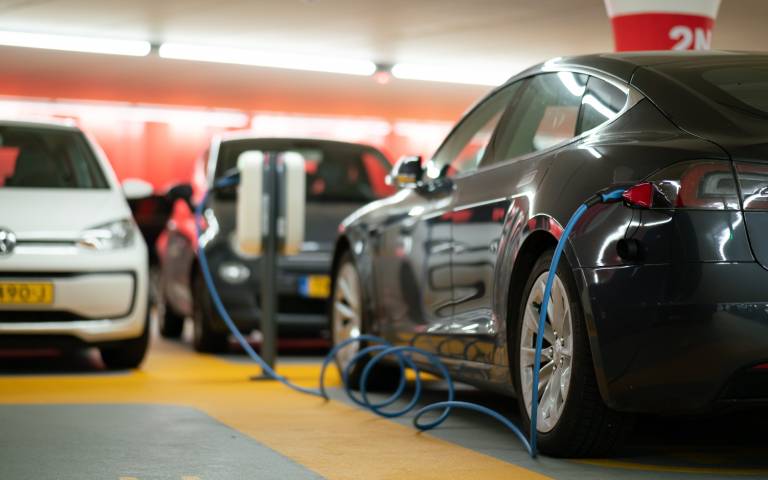Shape and Pace of Change in the Transport Transition: Sectoral dynamics and indicators of progress
27 May 2021
New report finds that exponential growth of electric vehicles (EVs) needs policy boost to meet climate goals

A new report commissioned by the We Mean Business coalition and conducted by UCL Institute for Sustainable Resources (UCL ISR), finds the uptake of electric vehicles (EVs) is now following an ‘S-curve’ growth. With the transport sector accounting for 24% of energy-related CO2 emissions, of which 45% are due to transport emissions, (including passenger road transport vehicles), it is vital to sustain and extend the transition towards zero-emission vehicles, especially since emissions have risen 16% between 2010 to 2018.
The Paris Agreement 2015 limits global warming to well below 2°C and ideally 1.5°C, which requires a steep decline in global greenhouse gas emissions towards zero by 2050. Reducing emissions at this scale is critical and requires rapid development and diffusion of zero-emission technologies.
The year-on-year increase in EV share of new car sales since 2015, has averaged around 41% per year. Research by the Energy Transition Commission showed that from 2024, consumers will prefer EVs over petrol and diesel cars on all fronts – costs, environment and performance. If this exponential rate of growth continues, then EVs will account for all global new passenger car sales by 2040 or thereabouts.
This is the second report on the dynamics of ‘S-curves’ relating to climate solutions and focuses on passenger cars, (following a first report on renewable power and the sector’s critical role in tackling the climate crisis). This latest report finds that a rapid transition is underway and appears to be unstoppable. However, its pace and depth will depend on policy and investments that focus on charging infrastructure and system integration, costs and investments, and supply and demand. In line with halving emissions by 2030 and a net-zero future by 2050, 100% zero-emission vehicle sales are required by 2035.
This report gives concrete recommendations to policy makers on how to accelerate EV uptake, including policy actions in the following areas:
- infrastructure (notably, public charging) and integration with the electricity system
- alignment of costs and benefits to consumers to ameliorate the barrier of up-front capital costs
- fostering and coordinating accelerated but balanced growth of both demand, (for example, through phase-out or stretching performance targets) and supply, (by supporting roles in key parts of EV manufacturing supply chains).
Michael Grubb, Professor of Energy and Climate Change at University College London Institute for Sustainable Resources, said:
The projections show that recent EV growth rates are consistent with S-curve shaped uptake dynamics, that would reach future benchmarks consistent with the goals of the Paris Agreement. If the right policies sustain the current rates of S-curve growth, we will hit benchmarks for more than half of new sales globally to be electric by 2030 – and soon after that, all new passenger vehicles sold could be zero emissions.”
Governments cannot achieve these challenges on their own. Engagement of and collaboration with the private sector, research institutes, civil society and the wider public is an essential part to accelerate the S-curve transition and halve emissions by 2030.
Photo by Michael Fousert on Unsplash
 Close
Close

